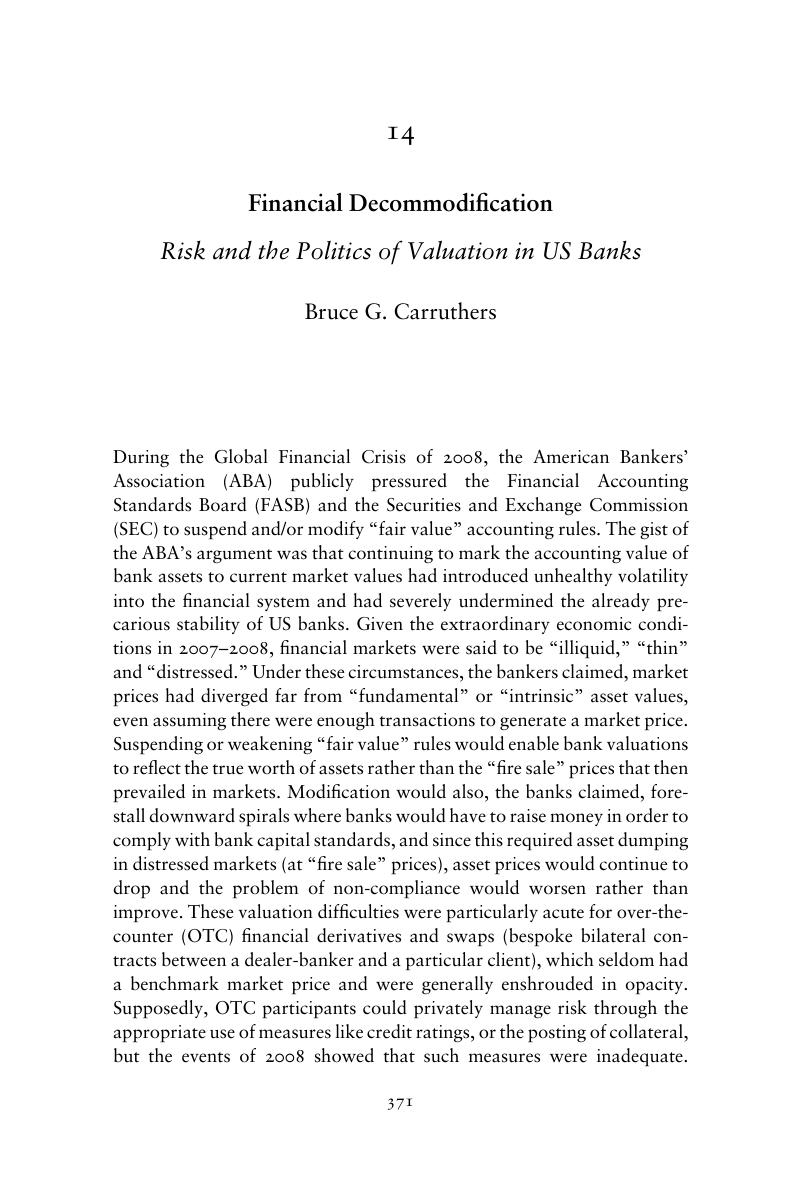 Policy Shock
Policy Shock Book contents
- Policy Shock
- Policy Shock
- Copyright page
- Contents
- Figures
- Tables
- Boxes
- Contributors
- Acknowledgments
- 1 Introduction
- Part I The Conceptual Terrain of Crises and Risk Perceptions
- Part II Case Studies on Offshore Oil Spills
- Part III Case Studies on Nuclear Accidents
- Part IV Case Studies of Financial Crises
- 13 Regulatory Responses to the Financial Crises of the Great Depression
- 14 Financial Decommodification
- 15 Euro Area Risk (Mis)management
- 16 The Regulatory Responses to the Global Financial Crisis
- Part V Conclusions
- Index
- References
14 - Financial Decommodification
Risk and the Politics of Valuation in US Banks
from Part IV - Case Studies of Financial Crises
Published online by Cambridge University Press: 24 October 2017
- Policy Shock
- Policy Shock
- Copyright page
- Contents
- Figures
- Tables
- Boxes
- Contributors
- Acknowledgments
- 1 Introduction
- Part I The Conceptual Terrain of Crises and Risk Perceptions
- Part II Case Studies on Offshore Oil Spills
- Part III Case Studies on Nuclear Accidents
- Part IV Case Studies of Financial Crises
- 13 Regulatory Responses to the Financial Crises of the Great Depression
- 14 Financial Decommodification
- 15 Euro Area Risk (Mis)management
- 16 The Regulatory Responses to the Global Financial Crisis
- Part V Conclusions
- Index
- References
Summary

- Type
- Chapter
- Information
- Policy ShockRecalibrating Risk and Regulation after Oil Spills, Nuclear Accidents and Financial Crises, pp. 349 - 370Publisher: Cambridge University PressPrint publication year: 2017
References
- 1
- Cited by


